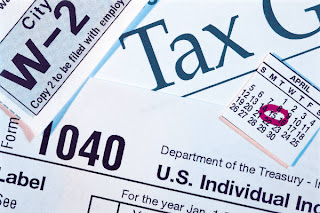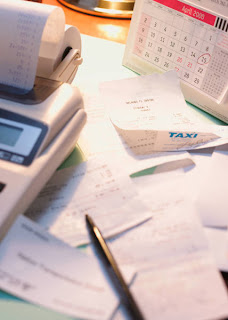With every year that rings in, comes the dreaded tax season. Last year in March I wrote some posts on tax information. I decided to post the links to those posts for those of you who need the information this year. I realize that last year, by the time I wrote the posts, a lot of people had already filed their taxes, but maybe if I post them up in January, they can be useful for someone.
I recommend that you read the over the deductions posts; there are a lot of things that I’d never know were deductions, if I hadn’t read about them.
I also highly recommend that you take a look at the organizing posts. The accountant we went to last year said that I had a really good system. My systems are very easy and straightforward, and it’s really helped me to stay organized. Anytime my husband has a question about a particular business expense, it’s very easy for me to locate things on the computer or in our files, (Plus, because of this system, all our deductions are already added up this year…actually they were added up a couple of months ago….all I have to do is print out the spreadsheets and wait for the other forms to come in the mail. Yes!)
I didn’t update any of these for this year, but I did add a link at the bottom to some information on environmental deductions (which I don’t believe were in my posts at all last year).
Taxes: Basic Info – Information about how to file online/offline and information about deadlines, etc.
Tax Deductions for the Self-Emplployed and Other Job Related Deductions – A list of business deductions such as office & shipping supplies and uniforms. It also includes a list of deductions related to job searches.
More Tax Deductions – Misc. deductions such as medical & education expenses, moving, and others.
Organizing Tax Information, All Those Forms – This post teaches you my system for organizing the tax forms which are mailed to at the begining of the year. To tell you the truth, since I only do this once a year, I decided to re-read the post just to make sure that I do the same things this year that I did last, and it was actually helpful to me.
Organizing Tax Information, Personal & Business Receipts for Deductions – This post teaches you my system for organizing receipts throughout the year, including how I file the reciepts & how I keep the saved on the computer. The system is for businesses but it can also be used for business deductions. Or you could use it for non-tax related expenses & budgets if you wanted. This system works very well for me, and since it’s early in the year, if you like the system if would be the perfect time to adopt it, so that you can use it throughout 2009 for an easy tax filing in 2010.
Environmental Deductions – Not a post of mine, but rather a list from Energy star of things that you can get tax credits such as energy efficient home improvements, appliances, and cars.
I hope you find these helpful!
-Jerri

















